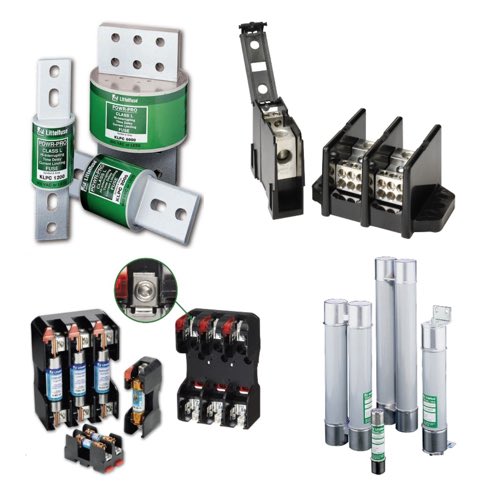Littelfuse Fuses

Littelfuse fuses are engineered to provide reliable circuit protection across a wide range of electrical and electronic systems. Known for their innovation and precision, Littelfuse designs each fuse to interrupt excessive current flow, preventing damage to sensitive electrical components and electrical equipment. Whether used in automotive, industrial, or consumer applications, these fuses help ensure the safety and longevity of connected devices by stopping faults before they escalate. Littelfuse fuses are manufactured to strict global standards and available in many current and voltage ratings, allowing customers to select the ideal option for their specific power and circuit requirements.
In the automotive sector, Littelfuse fuses are widely used for protecting vehicle wiring, electronic control modules, and other onboard systems. Their advanced designs provide dependable performance under vibration, heat, and other harsh conditions found in commercial vehicles. Littelfuse also produces specialized fuses for electric and hybrid vehicles, ensuring precise short circuit protection and optimal power distribution throughout the system. These products demonstrate the company’s commitment to safety and functionality while supporting the evolving needs of modern automotive design and manufacturing.
FAQs
Is it true that Littelfuse offers solid state relays at an affordable price?
Yes, Littelfuse offers solid state relays at an affordable price, providing reliable and efficient switching solutions for industrial and automation applications.
Breakers vs Fuses
Fuses
Fuses are safety devices that are intended to provide protection to both equipment and people in the event of a power surge or an overcurrent situation. A fuse can provide this protection by using a small piece of wire that is sacrificial, and is intended to burn up when too much current is passed through it. When this happens, the fuse eliminates the flow of electricity in that circuit until it is replaced. The size and type of wire that is used in the fuse will dictate how much current can pass through that individual fuse. So the main thing to remember is, when a fuse blows, it must be replaced and cannot be reused.
Circuit Breakers
Circuit breakers are intended to be reused after they are “tripped” during a power surge or an overcurrent situation. Much like fuses, circuit breakers are designed to trip at a certain current level. This is intended to protect both equipment and anyone in the area of that particular circuit. Circuit breakers can be found in just about any variation from single phase, low current applications to three phase, and high current applications.
As a general rule: fuses are more simplistic and reliable. They cost less initially and are better suited for individual circuit protection. However, they can create more cost over time with each use and may create hazards due to the exposed connection points. Whereas circuit breakers offer better branch circuit protection and do not need to be replaced after each use. They are more expensive initially and, because of their complexity, are more prone to failure over time.

